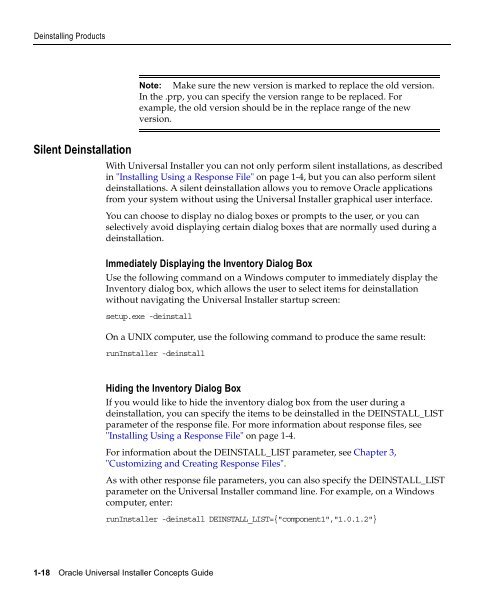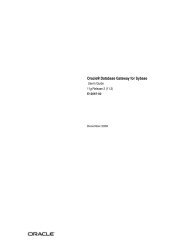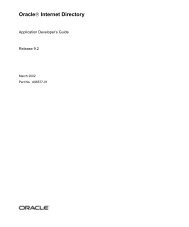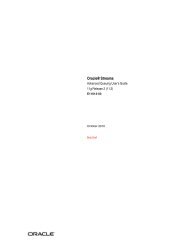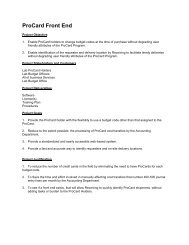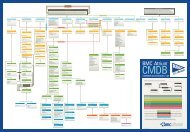Oracle Universal Installer Concepts Guide - Oracle Documentation
Oracle Universal Installer Concepts Guide - Oracle Documentation
Oracle Universal Installer Concepts Guide - Oracle Documentation
Create successful ePaper yourself
Turn your PDF publications into a flip-book with our unique Google optimized e-Paper software.
Deinstalling Products<br />
Note: Make sure the new version is marked to replace the old version.<br />
In the .prp, you can specify the version range to be replaced. For<br />
example,theoldversionshouldbeinthereplacerangeofthenew<br />
version.<br />
Silent Deinstallation<br />
With <strong>Universal</strong> <strong>Installer</strong> you can not only perform silent installations, as described<br />
in "Installing Using a Response File" on page 1-4, but you can also perform silent<br />
deinstallations. A silent deinstallation allows you to remove <strong>Oracle</strong> applications<br />
from your system without using the <strong>Universal</strong> <strong>Installer</strong> graphical user interface.<br />
You can choose to display no dialog boxes or prompts to the user, or you can<br />
selectively avoid displaying certain dialog boxes that are normally used during a<br />
deinstallation.<br />
Immediately Displaying the Inventory Dialog Box<br />
Use the following command on a Windows computer to immediately display the<br />
Inventory dialog box, which allows the user to select items for deinstallation<br />
without navigating the <strong>Universal</strong> <strong>Installer</strong> startup screen:<br />
setup.exe -deinstall<br />
On a UNIX computer, use the following command to produce the same result:<br />
run<strong>Installer</strong> -deinstall<br />
Hiding the Inventory Dialog Box<br />
If you would like to hide the inventory dialog box from the user during a<br />
deinstallation, you can specify the items to be deinstalled in the DEINSTALL_LIST<br />
parameter of the response file. For more information about response files, see<br />
"Installing Using a Response File" on page 1-4.<br />
For information about the DEINSTALL_LIST parameter, see Chapter 3,<br />
"Customizing and Creating Response Files".<br />
As with other response file parameters, you can also specify the DEINSTALL_LIST<br />
parameter on the <strong>Universal</strong> <strong>Installer</strong> command line. For example, on a Windows<br />
computer, enter:<br />
run<strong>Installer</strong> -deinstall DEINSTALL_LIST={"component1","1.0.1.2"}<br />
1-18 <strong>Oracle</strong> <strong>Universal</strong> <strong>Installer</strong> <strong>Concepts</strong> <strong>Guide</strong>


